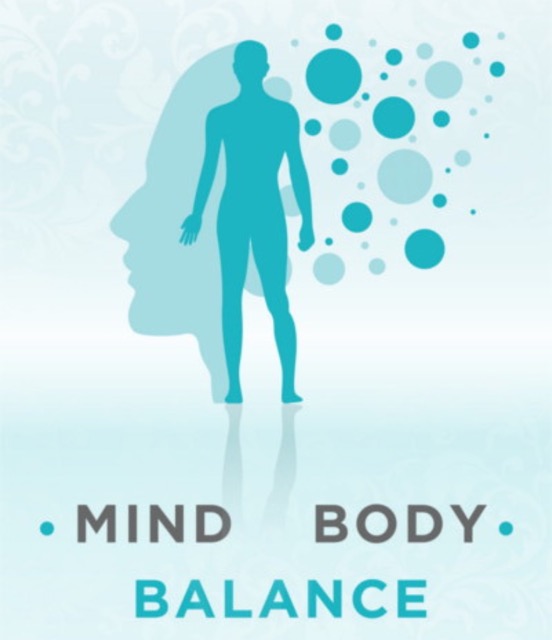There are many different types of anxiety - most come down to two things:
1. A dysregulated Nervous system
2. Patterns.
Dysregulated Nervous system
A dysregulated Nervous system is simply an imbalance between the body's sympathetic and parasympathetic Nervous system.
The Nervous system has an autonomic part which is divided into two parts:
Sympathetic:
Our survival reflexes, our fight or flight, which is often too high with anxiety.Parasympathetic:
Also known as rest and digest, when we are more relaxed and at peace.
The dysregulation is pretty much saying the sympathetic (fight or flight) is overstimulated.
Patterns
Patterns will seem more obvious. A simple example could be when someone with anxiety wakes up in the morning, they look to see if they still have anxiety. As a pattern of thought, they are in a habit of directing their mind. This, in turn, will cause more stress.
It's easy for someone to get stuck in a cycle.
Negative or fear-based thinking will cause the body to be in a stressed response. Over time, this will cause dysregulation and then this will lead to more thoughts that are fear based… and so the cycle continues.
Patterns are not just in the mind with our thoughts, but also in the way we hold our bodies (our posture) and the way we move.
Most of these patterns are unconscious, and when they are outside of our awareness, we can't do anything about them. So many people are hurting themselves without even knowing that they are causing their own pain; unaware that they are causing their own anxiety to persist.
Many techniques that teach management strategies often cause people to identify with anxiety, and this can have a long-term negative impact. This identification with anxiety is another pattern! If you say “I'm an anxious person”, this is a pattern that needs to change if you want to break free from anxiety.
Types:
Generalised Anxiety Disorder (GAD): The body is in a constant state of stress; fight or flight is stuck ON.
Social anxiety: Stress response (fight or flight) is triggered by social situations.
Phobias: Often initiated with a specific traumatic experience. An extreme fight or flight reaction to something specific.
Panic Disorder: Recurring and intense panic attacks, which are intense periods of overwhelming fear and physical discomfort.
OCD: Intrusive, distressing thoughts (obsessions) and repetitive, ritualistic behaviours (compulsions) performed to alleviate anxiety and fear.
PTSD: Can develop in people who have experienced or witnessed a traumatic event, leading to intrusive memories, avoidance, emotional numbing, and hyperarousal symptoms.
Insomonia: A sleep disorder characterised by persistent difficulty falling asleep, staying asleep, or experiencing non-restorative sleep, leading to daytime impairment and fatigue. Can be caused by too much stress and tension in the Nervous system.
Diagnosis
Anxiety disorders can be self diagnosed, or diagnosed by a clinician.
There are many online tests and questionnaires that people can use.
My feelings on this matter is to give you a little warning, as I have seen so many people who come into my office and they say “for years, I had anxiety and never knew what it was. Only recently, I discovered that it was actually anxiety that I was suffering from the whole time..”
When people say this to me, I always ask "when you realised this, did it get worse?" And the answer is always YES.
This is because they become identified with the problem and although they feel good about it at first (because they can now deal with it), most strategies for anxiety don’t really work so few people actually do deal with it! And so it becomes a jail of the mind.
It is a great first step - but as quickly after diagnosis as possible, you need to shift your thinking away from seeing yourself as having a problem (diagnosis) and start moving towards a solution.
From here, do what you can to increase how your Nervous system responds and adapts to life. Get strategies that work and make sure your focus is on moving towards the solution.
Is anxiety a diagnosed mental illness?
NO! Anxiety is a Nervous system response that has a mental impact. Mainly caused by stress, sometimes caused by diseases, and sometimes caused by other conditions that are of mental illness in origin.
Read more about how & why anxiety is not a mental illness.
Management strategies:
There are many, many management strategies that can help temporarily reduce anxiety, but unfortunately not many resources can tell you how to get rid of it for good. There are massive challenges with management strategies. Most people will start, and only abandon them after they realise they are short term fixes that actually perpetuate the problem.
That is if they work at all.
54321 Rule: Using your senses to reduce anxiety.
478 technique: Using breath to reduce anxiety
CBT therapy: Using your mind to reduce anxiety
All these techniques try to lessen the anxiety, but actually end up causing you to focus on the problem and therefore identify with the problem, causing it to persist.
None of them address anxiety at the level of the cause - which is the Nervous system.
NSA & Mindset retraining: Integrating body and mind to overcome anxiety.
This is different because we address the cause. I very rarely promote management strategies, unless it is for a client who is just beginning care as a temporary measure, or someone with pathology or other conditions.
For most of my clients with anxiety, we purposely avoid management strategies because they keep you stuck.
Imagine this: you have this exercise to help manage anxiety - let's say you are doing “box breathing". So now, every time you feel anxious, you pull out your tool - box breathing. You try it and see if it works… but to see if it works, you have to focus on the anxiety. As you do, you have to look to see if you have anxiety. As you focus your mind on the anxiety, you bring it back.
So, most techniques are doomed to fail because they keep your attention stuck within the problem - and you keep recreating it.

